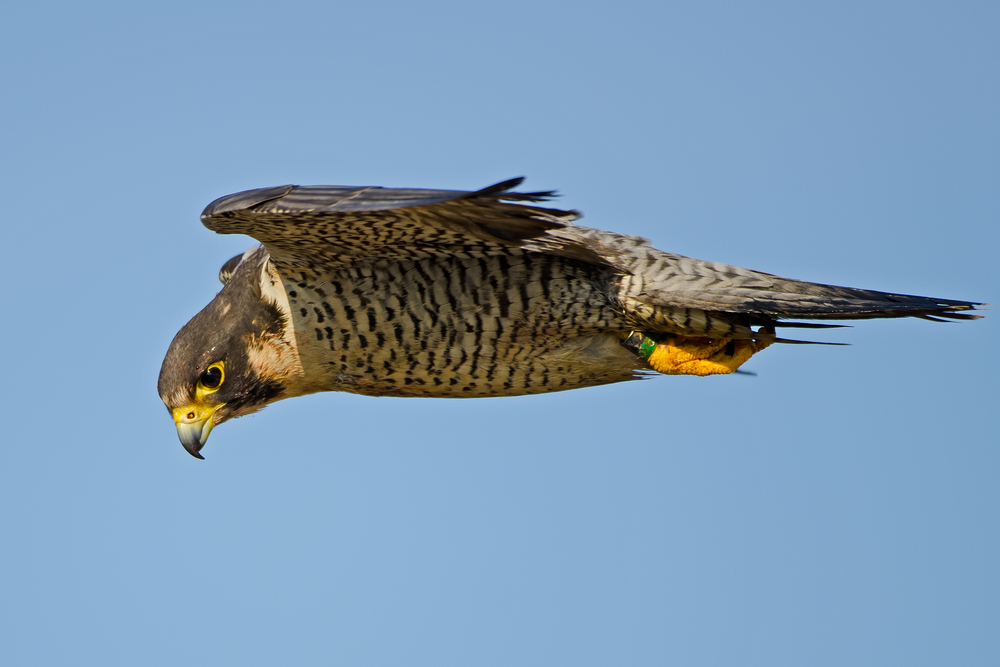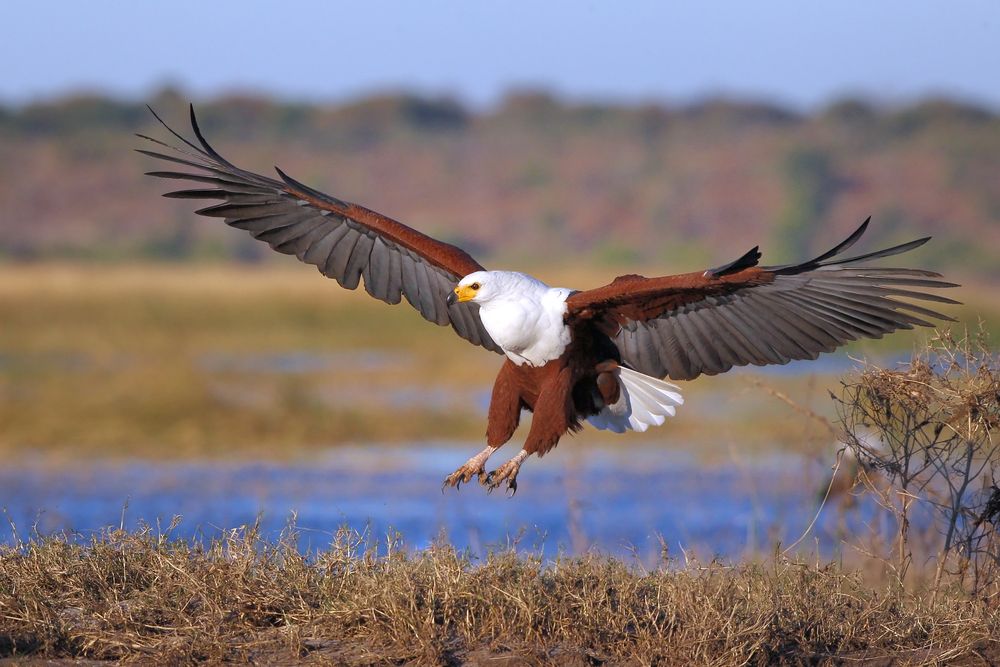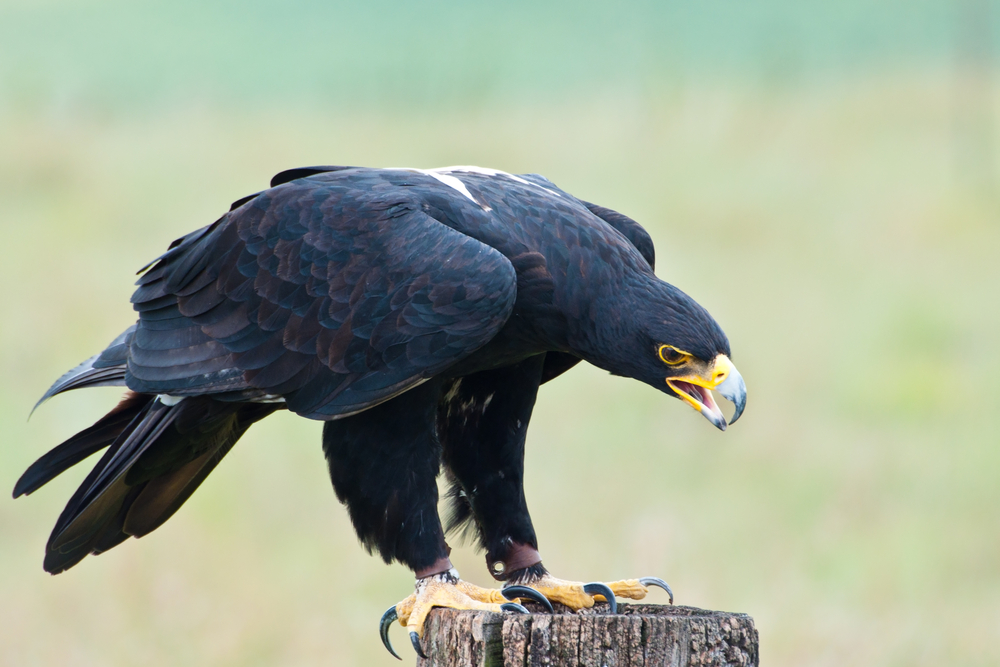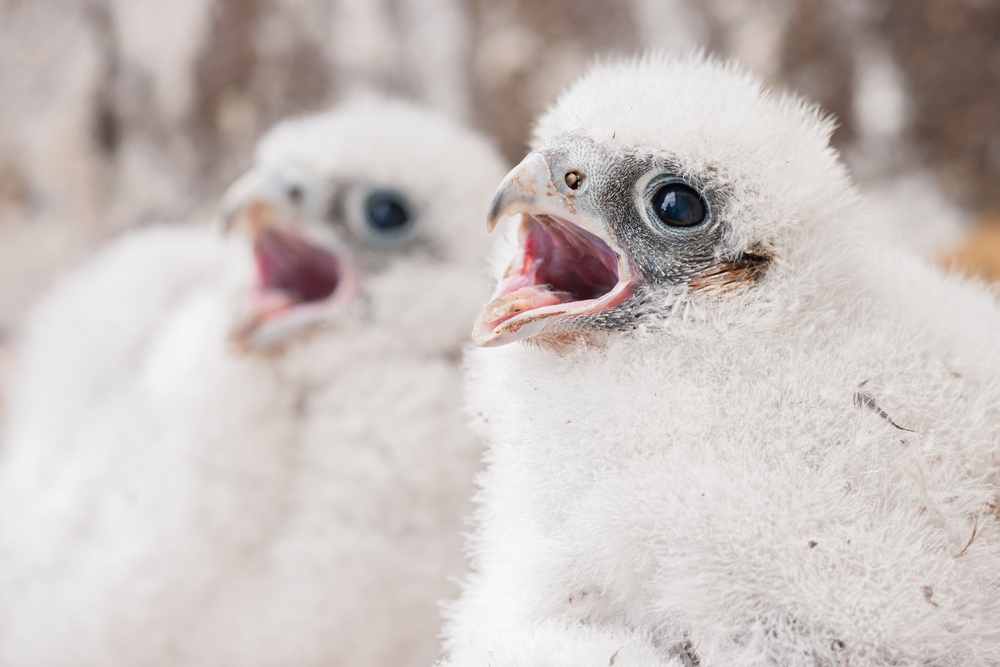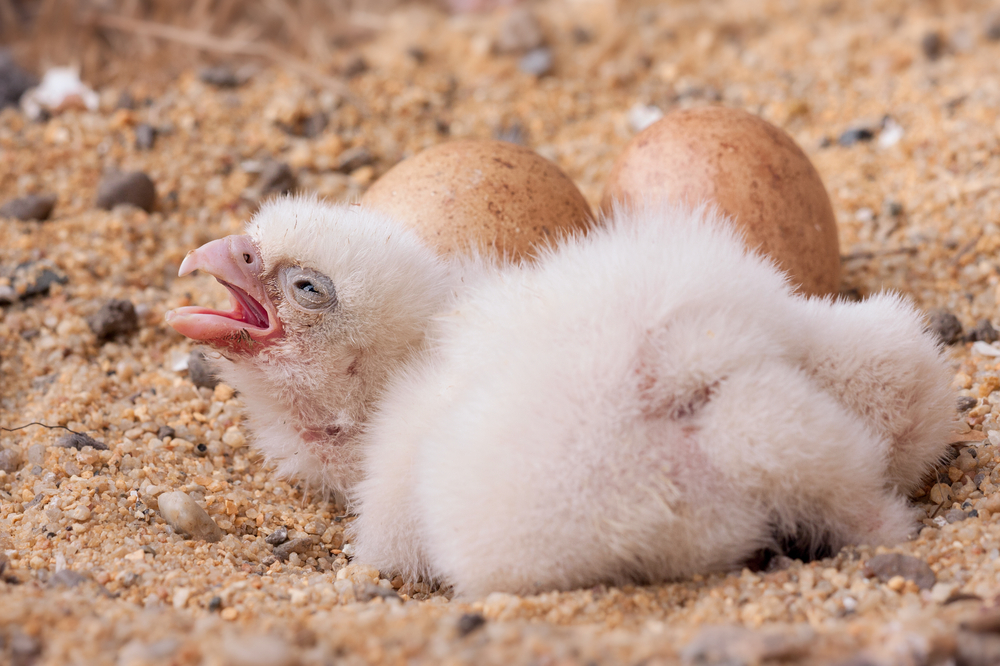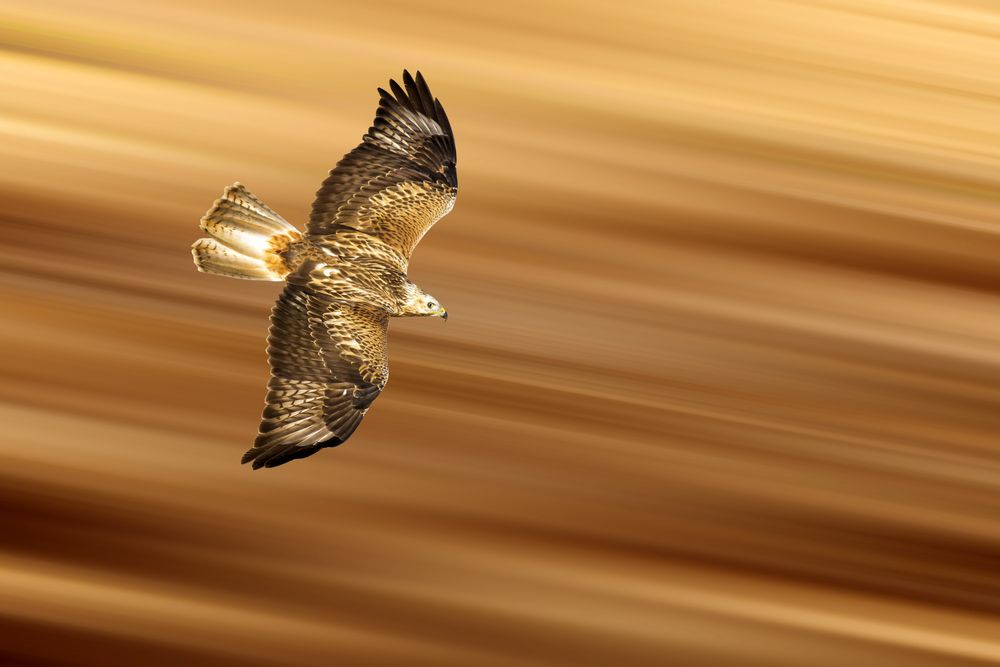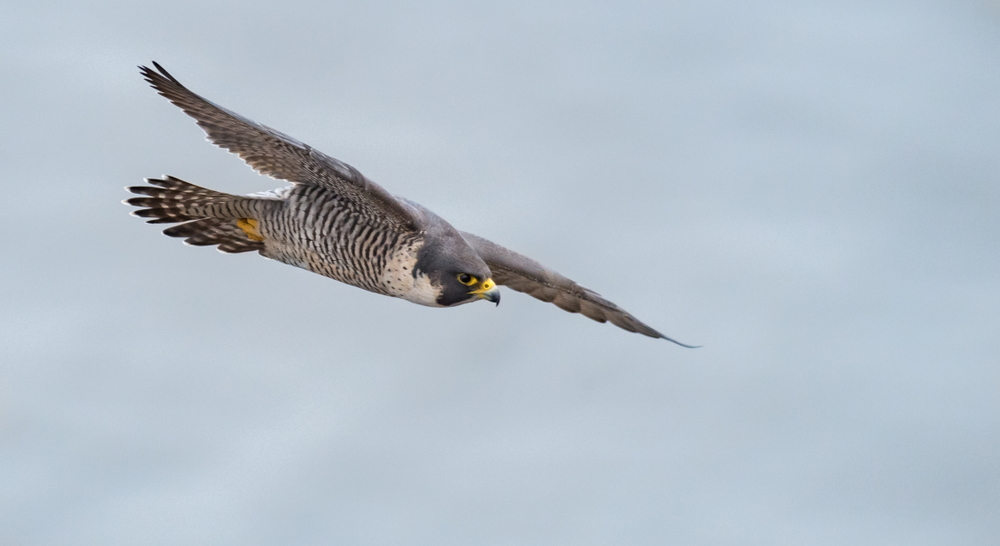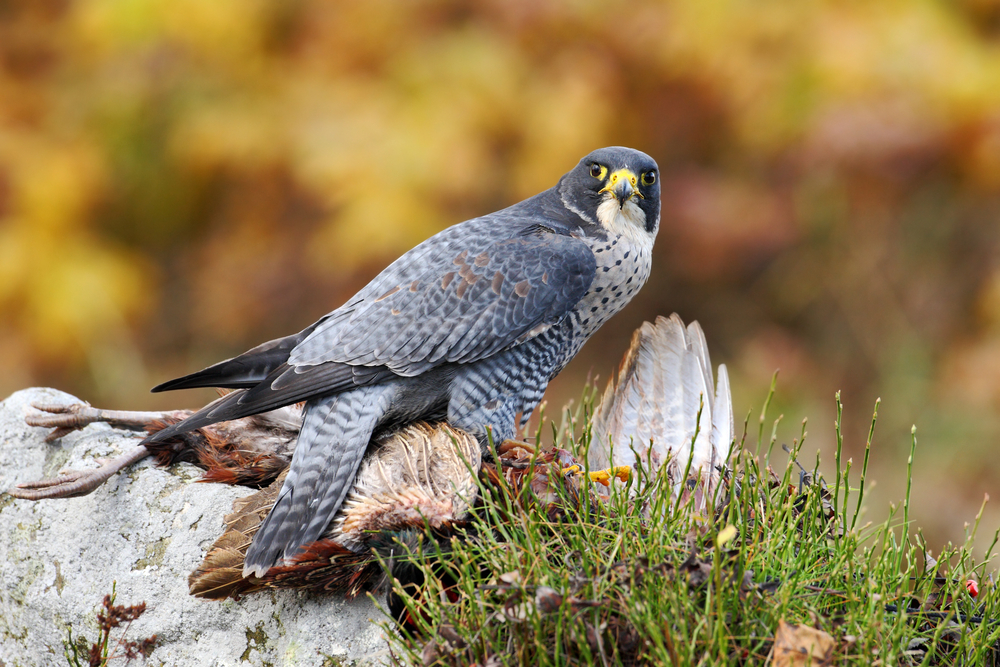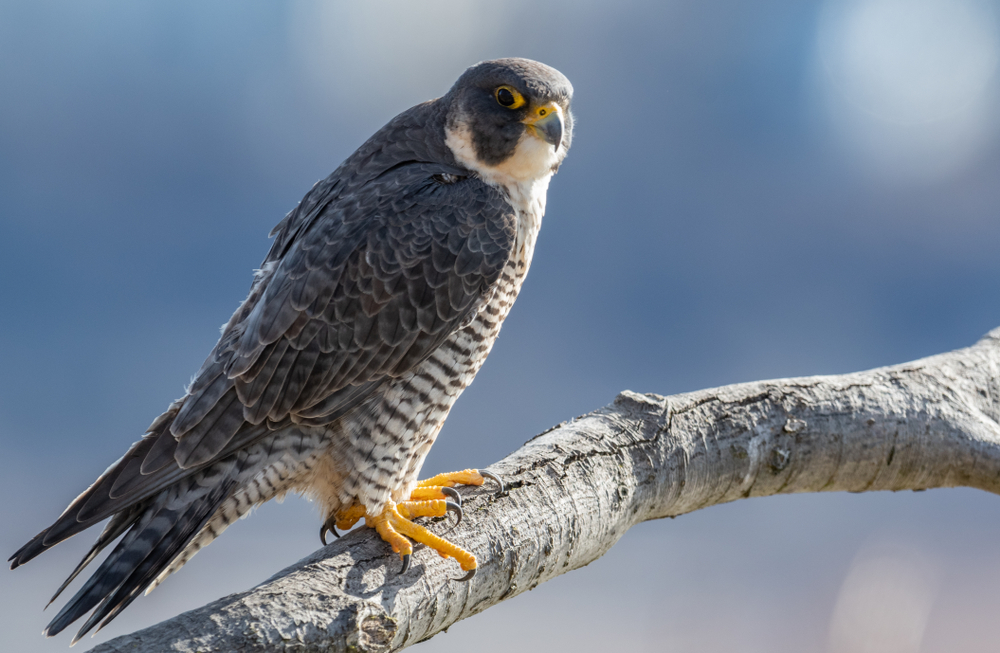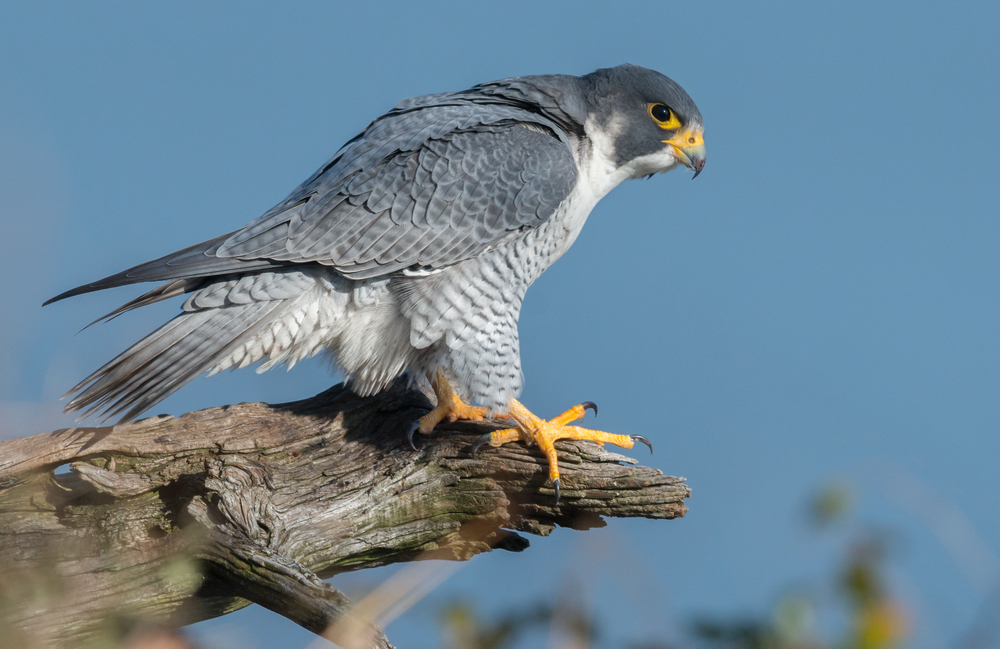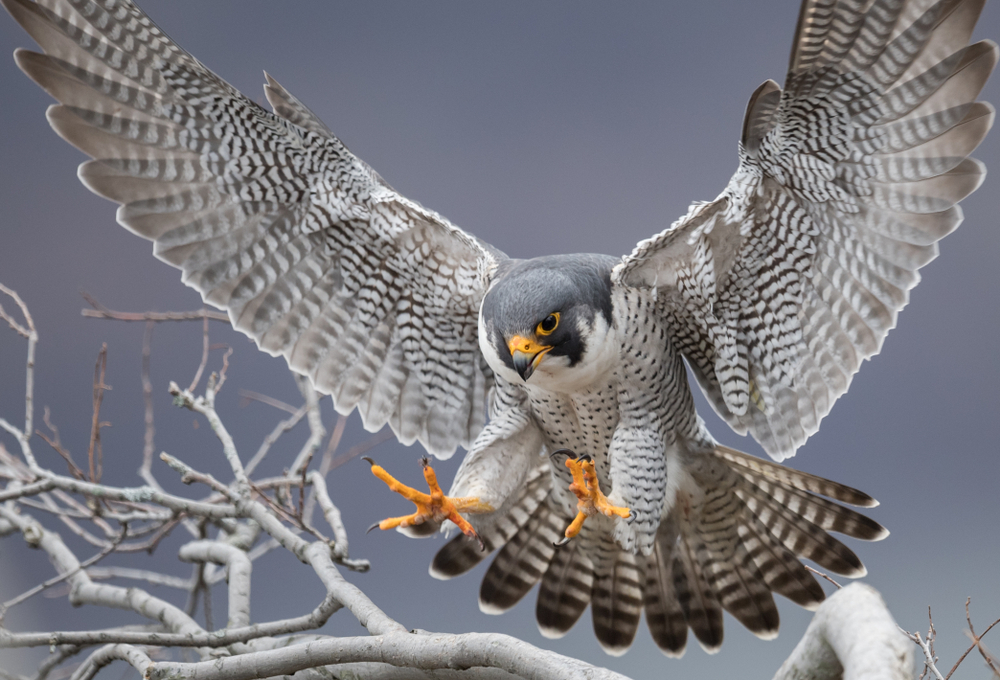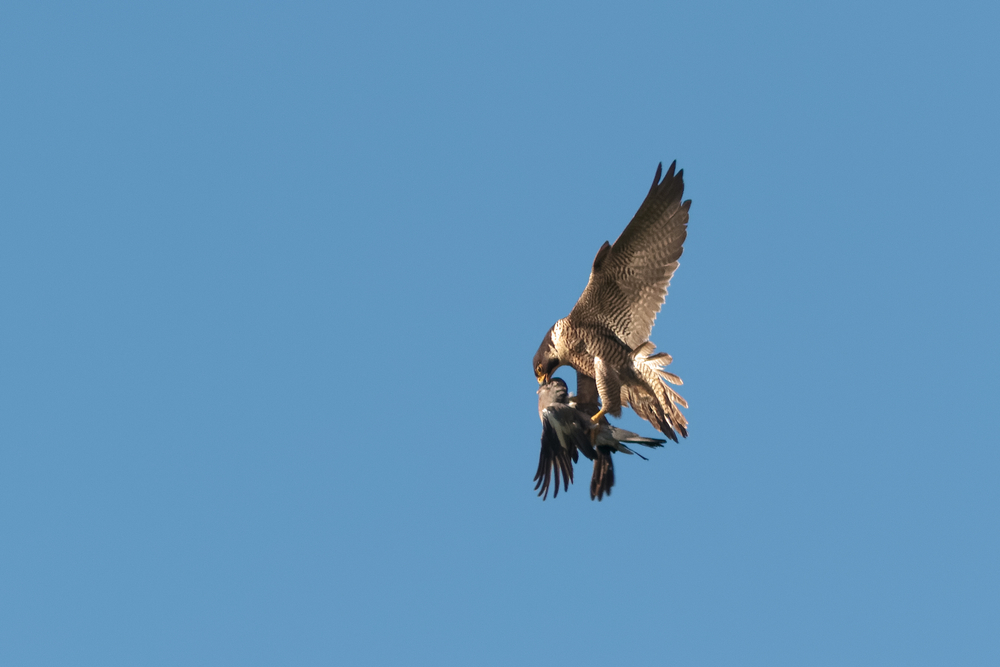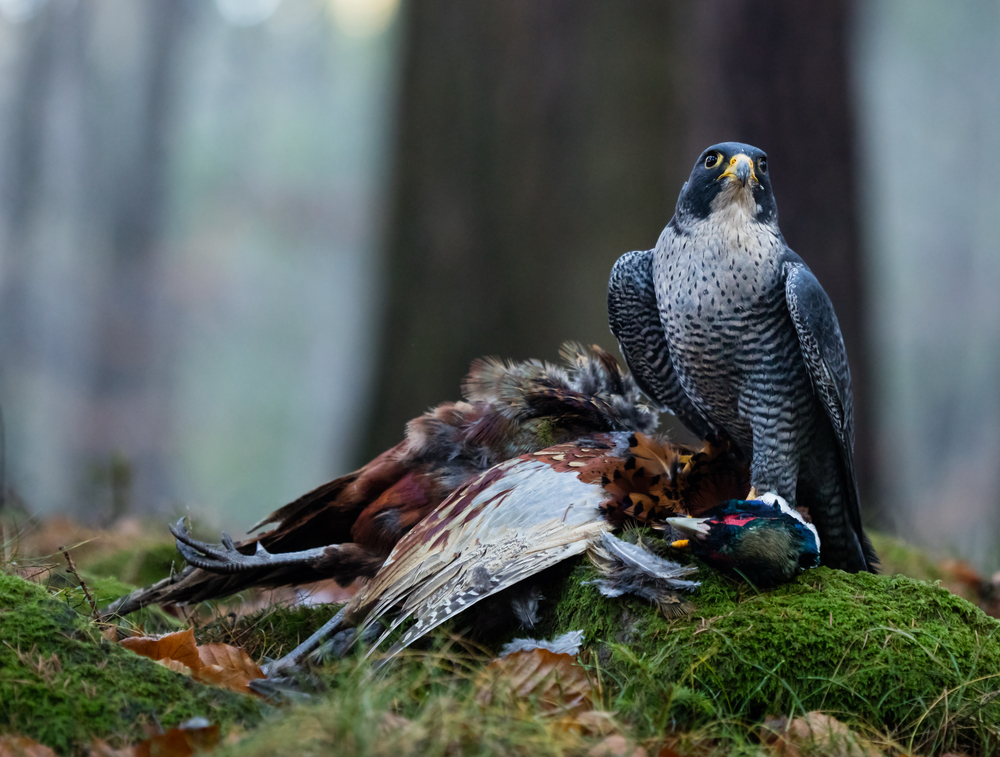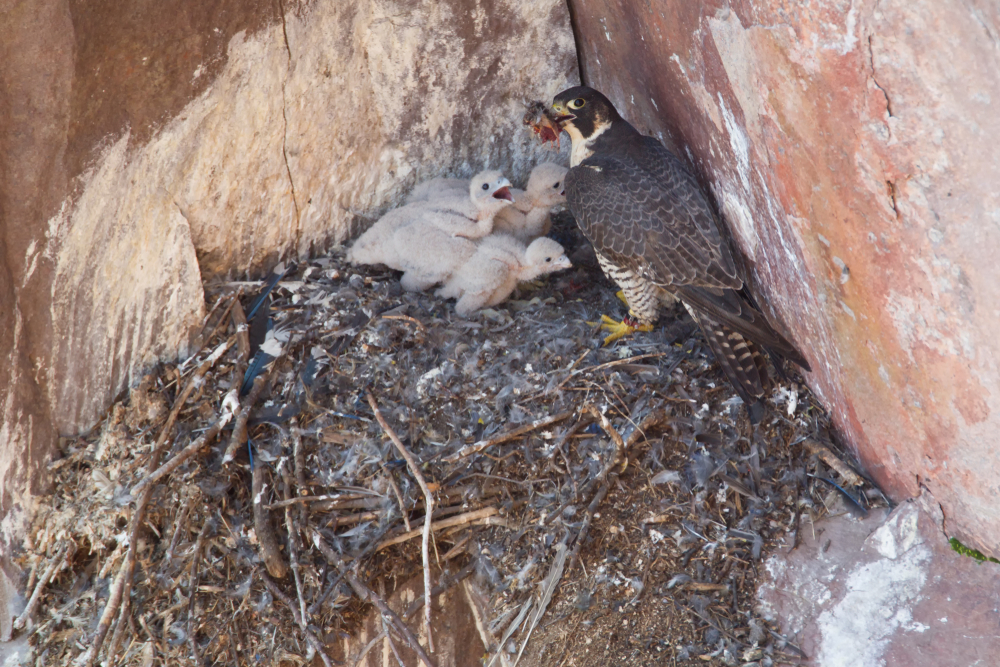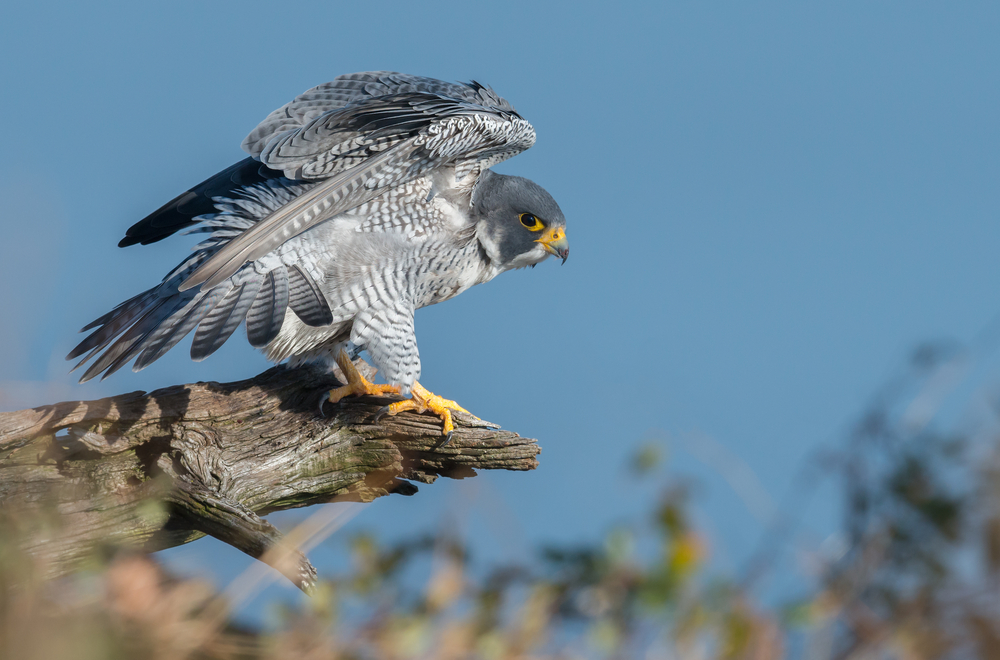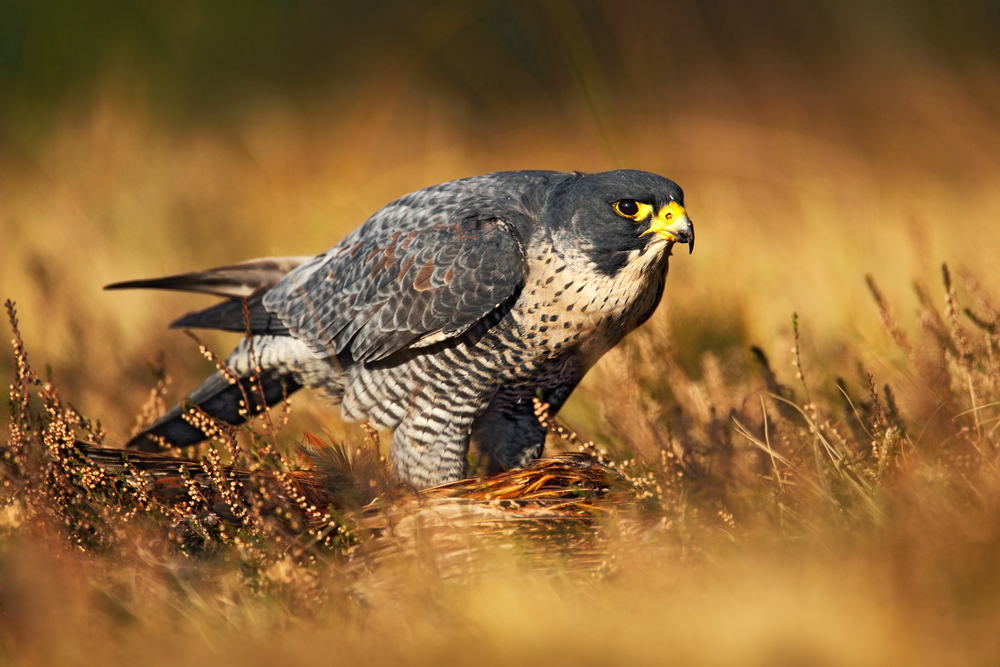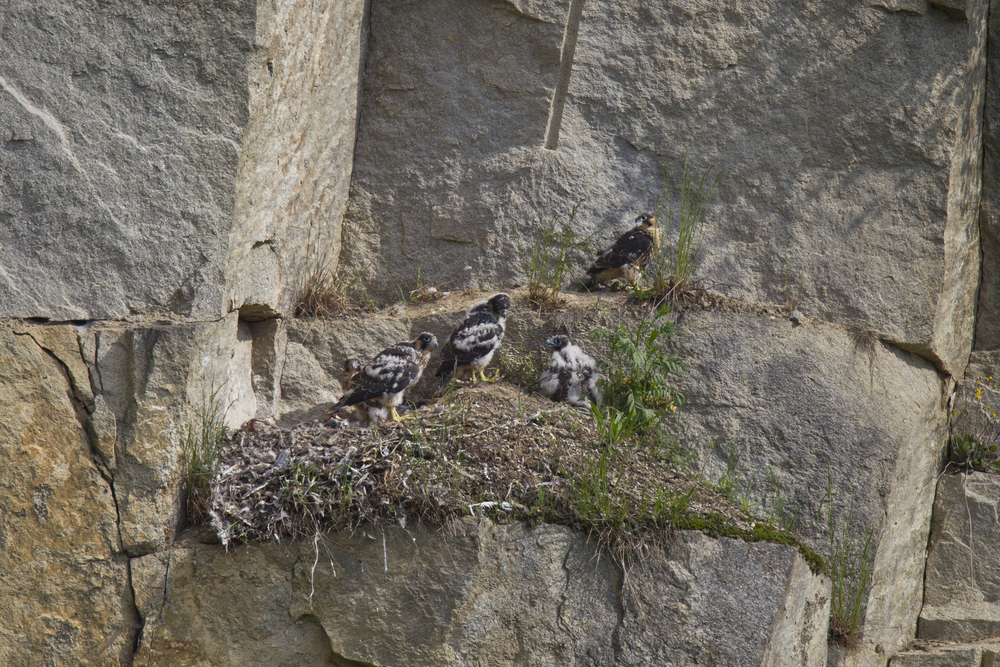Reproduction
The Peregrine Falcon’s reproductive cycle is characterized by distinct behaviors and stages, typical of many bird species:
Mating and Nesting: Peregrine Falcons typically form monogamous pairs that may remain together for several years or even for life. During the breeding season, which varies depending on geographical location, they engage in spectacular aerial courtship displays. They usually nest on high cliffs, tall buildings, or other structures, using a scrape, which is a shallow depression in gravel or dirt, rather than building a traditional nest.
Egg Laying: The female Peregrine Falcon lays a clutch of eggs, typically consisting of 3 to 4 eggs, though it can range from 2 to 5. The eggs are laid every other day and are a creamy to brown color with darker spots.
Incubation: The incubation period lasts about 29 to 33 days. Both parents share incubation duties, but the female does the majority of it while the male provides food.
Hatching: After the incubation period, the eggs hatch. The chicks, known as eyasses, are born blind and with a thin layer of down.
Development: For the first few weeks, the female stays with the young while the male hunts and brings food back to the nest. As the eyasses grow, they develop a heavier down and then juvenile feathers, preparing them for flight.
Fledging: The young falcons fledge, or leave the nest, at around 6 to 7 weeks of age. After fledging, the parents continue to feed and teach the juveniles to hunt for several more weeks.
Independence: Juvenile Peregrine Falcons typically gain full independence from their parents a few weeks after fledging and will start to establish their own territories.
The reproductive cycle of the Peregrine Falcon, from egg laying to the independence of the young, is a critical period that requires suitable nesting sites and an abundance of food to ensure the survival and growth of the chicks. This cycle underscores the importance of habitat and prey availability for the successful reproduction and continuation of Peregrine Falcon populations.



































































